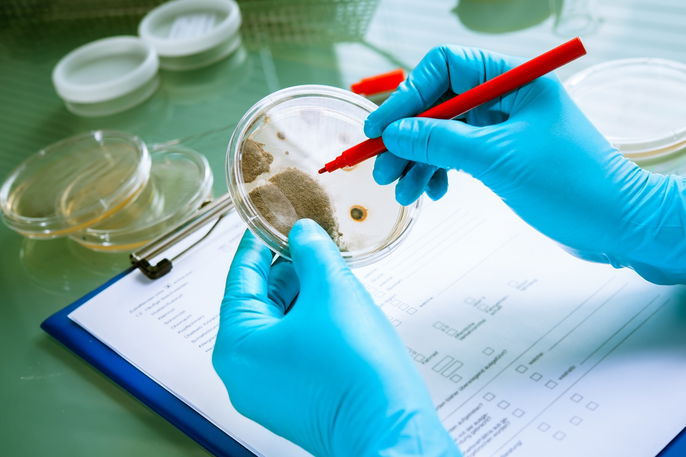What is it:
Blastomycosis is an infectious disease characterized by the inhalation of fungal Blastomyces dermatitidis spores, which can affect the lungs or spread systemically through the blood.
Blastomycosis is contracted by inhaling spores that are suspended in the air. These spores enter the respoiratory airways and lodge in the lungs, where they continue to grow and cause inflammation. Blastomyces dermatitidis is referred to as an opportunistic fungus because they tend to cause infection in those with a compromised immune system. However, it can also infect healthy people with a temporarily weakened immune system (weakened from a cold or stress, for example).
Blastomycosis in the lungs is the most frequent presentation of this fungal infection. It is curable as long as treatment is initiated promptly. If left untreated, this fungus can multiply easily and infect other areas of the body, like the skin, bones and nervous system, which can be fatal.

Main symptoms
Symptoms of blastomycosis are noted in the areas where the fungus has lodged. These spores most commonly lodge in the lungs, which can cause the following symptoms:
- Fever
- Dry or productive cough
- Chest pain
- Difficulty breathing
- Chills
- Excessive sweating
If you notice any signs or symptoms of blastomycosis, you should see a doctor for assessment and treatment as indicated.
Blastomycosis diagnoses are confirmed after symptoms evaluation, bloodwork and a chest x-ray. The bloodwork should reveal microscopic fungal structures in the analysis to confirm an infection.
Types of blastomycosis
When fungus enters the bloodstream, it is possible for it to spread to other areas of the body, causing other, more specific symptoms. Blastomycosis can be classified by the area the infection has spread to, with the main types including:
- Cutaneous blastomycosis: the fungus has reached the skin and leads to single or multiple skin lesions that grow and gorm atrophied scars.
- Osteoarticular blastomycosis: the fungus has reached the bones and joints, leading to swelling, heat and sensitivity in the affected areas
- Genital blastomycosis: characterized by genital lesions and more frequent in men; may lead to swelling of the epididymis and prostate sensitivity.
- Central nervous system blastomycosis: the fungus has reached the central nervous system and causes abscesses that can lead to meningitis if left untreated
The development of these types of blastomycosis is usually a sign that the infection has entered a more advanced phase, which may make treatment more complicated. Therefore, it is is essential to see a doctor once you notice the first signs of blastomycosis.
Treatment options
Treatment for blastomycosis depends on the person’s health status and the severity of infection. Non-critical patients are usually treated with oral itraconazole. Patients that present with more advanced infection or are allergic or itraconazole may be prescribed amphotericin B.
Blastomycosis prevention is not always possible, as the spores can easily disperse through the area. Areas near rivers, lakes and swamps are where this type of fungus most commonly lives.






























